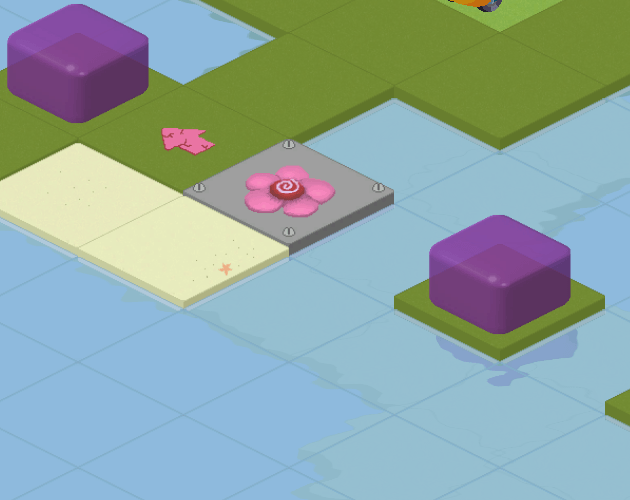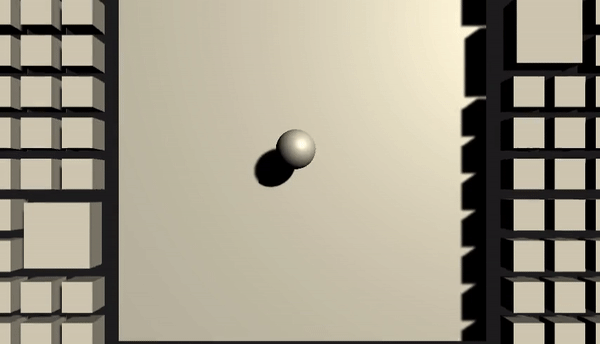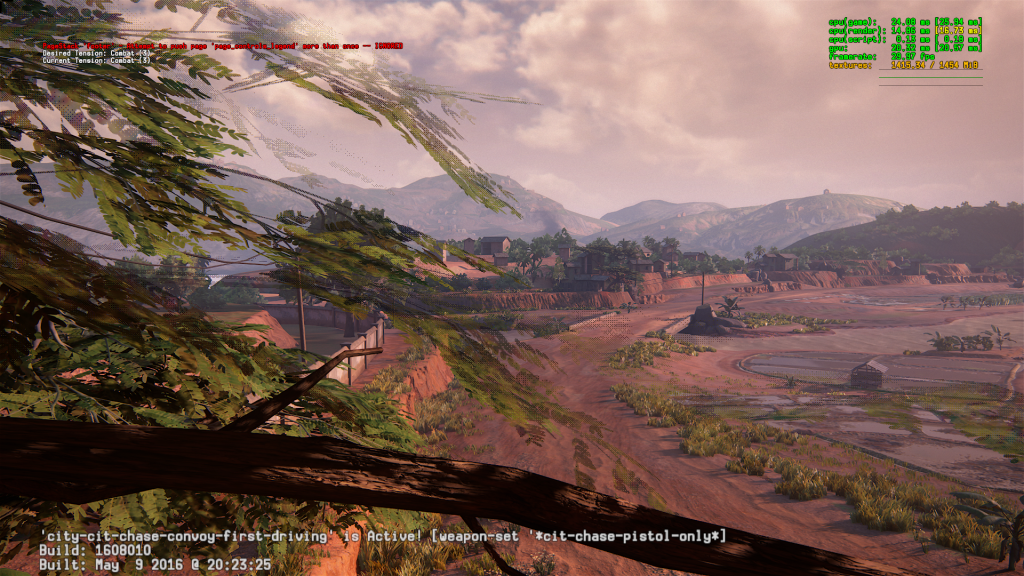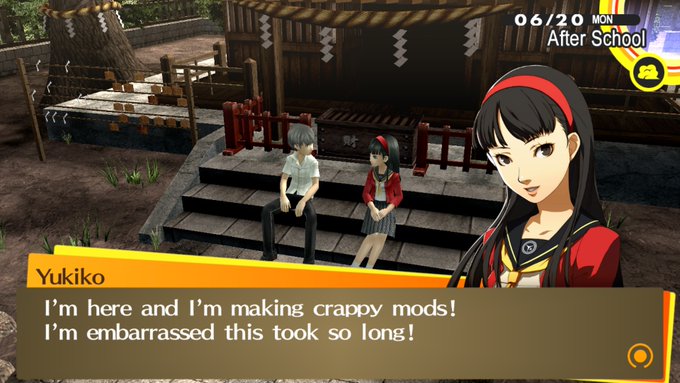April 2022: Physics Parade & Metaballs
Lately I’ve been toying with the idea of making a Lemmings-like game with a robust physics system, almost similar to Crayon Physics.
I knew I wanted a rope system, but wasn’t sure the best way to achieve that in Unity. In the gif below I’m using a system that essentially uses two joints and a line renderer to simulate a rope – when force is applied to either end of the rope, it will make the rope more taut, unless the rope is already a certain tautness, in which case it applies a force to the object on the other end of the joint. If the rope becomes “too taut” or the force is too strong, the rope breaks. It supports several types of joints, including fixed and “jointless” (a free-hanging end of a rope).
I’d really like to try a different method using a series of joints (basically just a chain) rather than just two joints and custom physics logic because I feel it might be more realistic/reliable, although it will definitely require a lot of processing power.
I also spent awhile piecing together a liquid simulator using metaballs, which was really fun. Shoutout to Rodrigo Fernandez Diaz, whose metaball liquid system I heavily modified to achieve some really basic, but super performant liquids.
I’ve been really drawn to some of the cool aesthetics metaballs can achieve lately – I really want to try making a user interface using them similar to what Luke Holland has achieved here.
Anyway, I’m not sure I’ll continue work on this project anytime soon, but it was fun to experiment with different physics techniques for awhile.

March 2022: Flowa Finishing Touches
Flowa is basically done! I’m really proud of the game and you can check it out here.
At this point I’m just sitting on it, trying to decide how I want to publish the thing. It is mostly entirely complete with 100 levels to play and I think it looks great! Watch the trailer here.

A fun detail about this image is that it actually showcases one of the most complicated systems in the game. I generally avoided introducing height differences to Flowa because, as a 2D isometric game, it can get complicated to display things at different heights properly (since “height” is essentially just an illusion formed by tall sprites).
Normally, when the player jumps off of a pink flower, they need to arc in an even parabola and land back on the ground. This wasn’t too complicated to set up, although calculating the arc was a little awkward. The complicated part comes in when the player needs to land on a pink slime block – if I used that same arc, the player would bounce off of the middle of the slime instead of the top and it looks terrible. I was essentially forced to determine where the player was going to land ahead of time and actively modify the arc of the jump to pretend to land on the top of the slime block! In actuality, the player’s shadow is where collisions and position detection are calculated.
June 2021: Flowa Progress
Lately I’ve been spending a lot of time making steady progress towards releasing Flowa. I’m taking a moment here to link the devlog I wrote detailing how I added reflections to the game recently. I think they add a lot to the visuals and I’m pretty happy with them.

October 2020: Game jam - Scream Jam 2020
With Halloween coming up, I decided to enter a popular 10-day horror game jam, Scream Jam 2020.
After some deliberation, I decided to revive a small dithering Unity demo I made back in April (there’s a post about it below if you’re interested) for my entry. I immediately decided to make a detective-style mystery akin to a Phoenix Wright game. Gameplay would involve searching a house for clues and extensive dynamic branching dialogue sequences in order to get enough information to catch a murderer.
This is partially because of an idea I wanted to use for highlighting interactable objects when the player hovers them; by using a second dither camera that renders only a “Highlight” layer, and switching objects to that layer when hovered, I could fade the dither effect in and out on the highlight camera to give the impression that interactable objects gained color when hovered. This looks especially cool when applied to things with striking colors, like blood. There are some examples in this gameplay video if you’re interested (there’s no sound).
The final game actually had 4 cameras on the main player to achieve the desired effects: the highlight camera I just described, both depth and normals cameras that were used to apply thick outlines to world geometry, and the “basic” dither camera that the other cameras rendered on top of.
My final submission to the jam was House of Berluscont, which I encourage you to try out if you have 20 or 30 minutes. I’m really happy with what I was able to achieve within the time limit, although I would definitely do some things differently next time. This was my first large Unity 3D project, so I made some basic mistakes when constructing the house from premade assets, and had a lot of headaches with the lighting system (until I turned on GPU lightmapping, which cut several minutes off of the process). If I had the time, I would add quite a bit of additional dialogue and open up some of the locked rooms that I didn’t have time to complete, as well as improve the sound design, which isn’t great right now.
At time of writing, community voting is still in progress. There were a whopping 171 entries to the jam! Playing everyone’s entries has been a great experience, and I’m hopefully going to find more time to participate in game jams in the future.
UPDATE 10/31: Amazingly, House of Berluscont WON both the “Enjoyment (Best Game)” and the “Story” categories of Scream Jam 2020! I’m really glad people enjoyed it since I put so much time into polishing it. Thanks so much to everyone who voted, and to everyone who put up with me while I was running on very little sleep, and supported me with testing and feedback!
The ratings confirmed to me that my worst areas were SFX and horror. It definitely turned out to be more of a detective game than a horror game; the music is really the only thing that makes it scary. And the music is not great – I would love to have made it more adaptive and reactive to what’s happening, and have better leveling in general (the music gets way too loud at times). Would be awesome to work with a sound designer next time I do a project like this to try to shore up those weaknesses.
June 2020: Persona 4 Golden Modding
With P4G finally coming to PC this month, I’ve been immersing myself in its modding community. A lot of the decompilation tools out there seem to have trouble with certain files, but despite that I managed to make a few mods revolving around modifying what comes out of chests while in dungeons.
The Reaper in Every Chest version of the mod is seeing a good amount of use because it makes grinding easier, but a few bugs have been reported, probably due to the way I had to hack the decompiled code back together. Even if I tried to recompile this particular unmodified decompiled script, I got an error, indicating it’s a problem with the tool (either the decompilation or recompilation half).
I also messed around with dialogue editing, but the tools available also make this process hit-or-miss:
There are more things I want to try in this space – I added a channel to the TV but couldn’t seem to get it to show anything but the weather, for instance – but I think I’ll leave it alone for now to see if the tools available improve at all with the arrival of the game to PC.
June 2020: Word Games
I’ve been playing with the idea of developing a procedurally generated roguelike where word games serve as the primary gameplay mechanic, e.g. anagrams or word searches. I spent a week or so working on a data structure that can efficiently serve a random word of a given length and complexity so that the difficulty of the game can increase as the player progresses. I loaded SCOWL (spell checker oriented word lists) into it for now and it actually works quite well, despite it not being the primary purpose for those word lists.
Here’s a small demo (Windows, 18MB) of the “anagram gate” system I have working already, that was procedurally generated with a very basic algorithm. Example gif of the basic gameplay below.

May 2020: Scraping UFO Data
I ran across this repository of interesting public datasets recently and, since I was just working on improvements to an older data science project of mine, I thought it would be fun to exercise those muscles again. Without any clear goal, I narrowed down my options to a few datasets with COVID-19 data and the National UFO Reporting Center database, and decided an escape from reality would be nice…
NUFORC proved deceptively annoying to scrape – a lot of their links are broken, and an equal number of their report links lead to completely empty pages, so the final version of my scraping script ended up being fairly robust. I haven’t used Python in awhile, though, so it’s pretty crusty. In the end, I scraped ~90MB of UFO report data dating back decades.
I don’t have any big ideas for how to use the data yet, but I found this awesome website that used an older version of the same data to create a UFO sightings map. I’m toying with the idea of doing some NLP to get some interesting insights out of it, but I’m not sure yet. Check out my progress here.
Also, here’s a quick sample graph from the data I collected. It’s a frequency chart of the reported shape of the sighted UFO, with the Y axis representing the number of reports of that shape:
May 2020: Color Glossary Improvements
I was glancing back through my old projects and looked to the color glossary page I made, and had a few issues with it. It provided “percentage similar” to the selected color, which was basically always 99%, so that seemed silly. The search function had some serious issues as well, and it wasn’t too hard to find near-duplicate color names in the list.
I fixed up the search method (which was barely functional – not sure what I was thinking), added Crayola colors to the mix, removed the “percentage similar” stat altogether, and added the capability to link to a specific color in case you want to show your friends. Feeling pretty good about where it’s at now, probably won’t change it for a long time!
April 2020: Hatching and Dithering in Unity
After finishing Return of the Obra Dinn, I’ve become obsessed with unusual processing effects on 3D gameplay. I came across someone who makes excellent Unity filters such as this hatching effect and this dither effect, which I think are really cool. I used the dither effect to create a retro feel for a demo for a 3D, dialogue-heavy investigation game I’m experimenting with.
Obviously, these kind of effects don’t necessarily make a game look better, but they give it a distinct look that can set it apart, which can be much more important in the indie game scene. It can also cover up some modelling imperfections or blandness that is common in a lower-budget game. AAA games have some use cases for these effects as well – the dither effect is often used in games when objects collide with the camera and transparency is to expensive.
Dithering on foliage in Uncharted 4:
 Check out Allen Chou’s brain dump of what he worked on for Uncharted 4 if you get a chance (there’s a section on dithering), it’s pretty interesting.
Check out Allen Chou’s brain dump of what he worked on for Uncharted 4 if you get a chance (there’s a section on dithering), it’s pretty interesting.
September 2019: Queeb
Almost a month ago, I made the short trip to Naperville to see the first live show some YouTubers I’m fond of were putting on in their “We Are Two Different People Tour”. All said, it was pretty good, although it was a little startling to realize how young their audience is! I felt a little old to be there.
In any case, one of their bits involved a fictional app called “Queeb” which was “sponsoring” their comedy show. The most interesting part of the bit to me was the number of people in the crowd that checked their phones to see if it was a real app – it wasn’t. So, I thought it would be fun if I enhanced their joke a little by creating a real app that was in on the joke.
In the end, it got about 500 downloads before the tour was over and maintained a 5-star rating. Around 30 of those downloaders emailed the in-app contact link asking for “Queeb Coins” and the like – hopefully the whole thing made some people smile!
